Nestled amidst the lush greenery and winding waterways of the Mekong Delta, the Cai Be Floating Market stands as a remarkable testament to Vietnam’s rich cultural heritage and the resilience of its people. This vibrant marketplace, where boats laden with produce glide along the tranquil waters, offers a unique and immersive experience that transport visitors back in time. Whether you’re seeking a glimpse into the region’s history, a taste of authentic local cuisine, or simply a chance to immerse yourself in the rhythms of daily life, Cai Be Floating Market promises an unforgettable adventure.
History of Cai Be Floating Market

Origins and Evolution
The origins of Cai Be Floating Market can be traced back to the 18th century, when the Mekong Delta emerged as a major agricultural hub. Faced with the challenges of transporting goods across the vast network of rivers and canals, local farmers and traders ingeniously adapted, transforming their boats into floating markets. What began as a practical solution soon evolved into a thriving cultural tradition.
Role in Trade and Commerce
Over time, Cai Be Floating Market grew in size and significance, becoming a pivotal hub for both domestic and international trade. It played a crucial role in the distribution of agricultural products, such as rice, fruits, and vegetables, to distant markets. The market’s strategic location along the Tien River, a major tributary of the Mekong River, facilitated the exchange of goods between the delta region and the rest of Vietnam.
Resilience and Adaptation
Despite the challenges posed by modernization and changing lifestyles, Cai Be Floating Market has remained a enduring symbol of Vietnam’s cultural heritage. Its resilience and ability to adapt to changing times have ensured its continued relevance, attracting both locals and tourists alike who seek to experience a unique slice of traditional Vietnamese life.
Location and Geography of Cai Be Floating Market
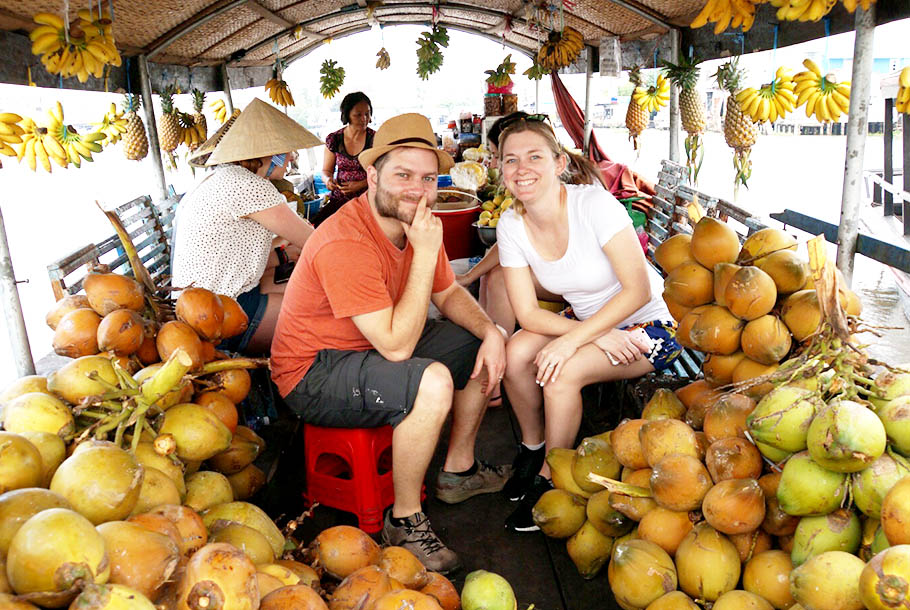
Strategic Riverine Location
Cai Be Floating Market is located in Cai Be District, Tien Giang Province, approximately 100 kilometers southwest of Ho Chi Minh City. The market takes place on a section of the Tien River, a major tributary of the Mekong River. The Tien River at Cai Be is wide and slow-moving, providing an ideal location for the floating market.
Floating Marketplace
Vendors set up their boats along the riverbanks, creating a dense network of vessels that stretch for several kilometers. This unique marketplace is a true feast for the senses, with the aroma of fresh produce mingling with the sounds of haggling and the vibrant colors of the boats and their wares.
Surrounding Landscapes
The market is surrounded by a picturesque landscape of lush greenery, with coconut palm trees lining the riverbanks and small villages dotting the nearby countryside. This idyllic setting adds to the charm of the Cai Be Floating Market, providing a peaceful backdrop against which the lively market thrives.
Products Sold at Cai Be Floating Market
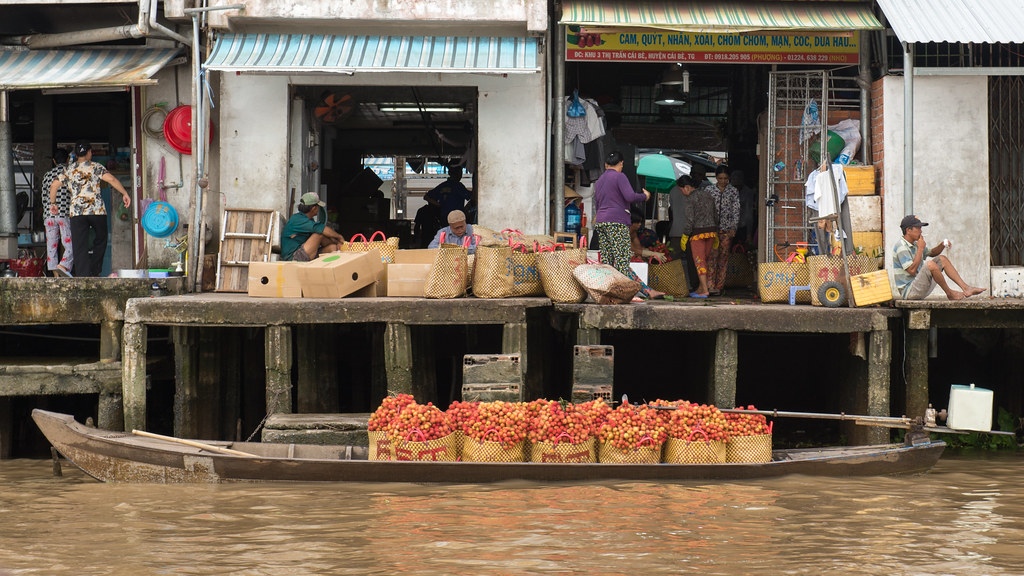
Agricultural Bounty
The Cai Be Floating Market is a true celebration of the agricultural bounty of the Mekong Delta region. Visitors can find an array of fresh produce, including:
- Tropical fruits: mangoes, pineapples, dragonfruit, and more
- Vegetables: leafy greens, herbs, eggplants, and a variety of other locally grown vegetables
- Rice: the staple crop of the region, available in various varieties
Handcrafted Goods
In addition to fresh produce, the market is also a hub for handcrafted goods made by local artisans. These include:
- Woven baskets and mats
- Ceramics and pottery
- Woodcarvings and souvenirs
Live Animals and Seafood
For those seeking a true taste of the local cuisine, the Cai Be Floating Market offers live animals and fresh seafood. Vendors sell live poultry, fish, and crustaceans caught from the nearby rivers and canals, ensuring the freshest ingredients for traditional Vietnamese dishes.
Cultural Significance of Cai Be Floating Market

Preservation of Traditions
The Cai Be Floating Market is more than just a marketplace; it is a living embodiment of Vietnam’s cultural heritage. By preserving the centuries-old tradition of floating markets, the Cai Be community has ensured that the unique way of life and cultural practices of the Mekong Delta region are passed down to future generations.
Hub of Social Interaction
The market serves as a vibrant hub of social interaction, where locals gather to catch up on news, exchange stories, and strengthen community bonds. It is a place where the rhythms of daily life converge, creating a lively and dynamic atmosphere that is quintessentially Vietnamese.
Sustainable Living
The Cai Be Floating Market exemplifies the principles of sustainable living, with its emphasis on locally sourced produce and minimal waste. The market’s reliance on traditional modes of transportation and trade practices contributes to a lower carbon footprint, making it an environmentally friendly way of life.
Activities for Visitors at Cai Be Floating Market
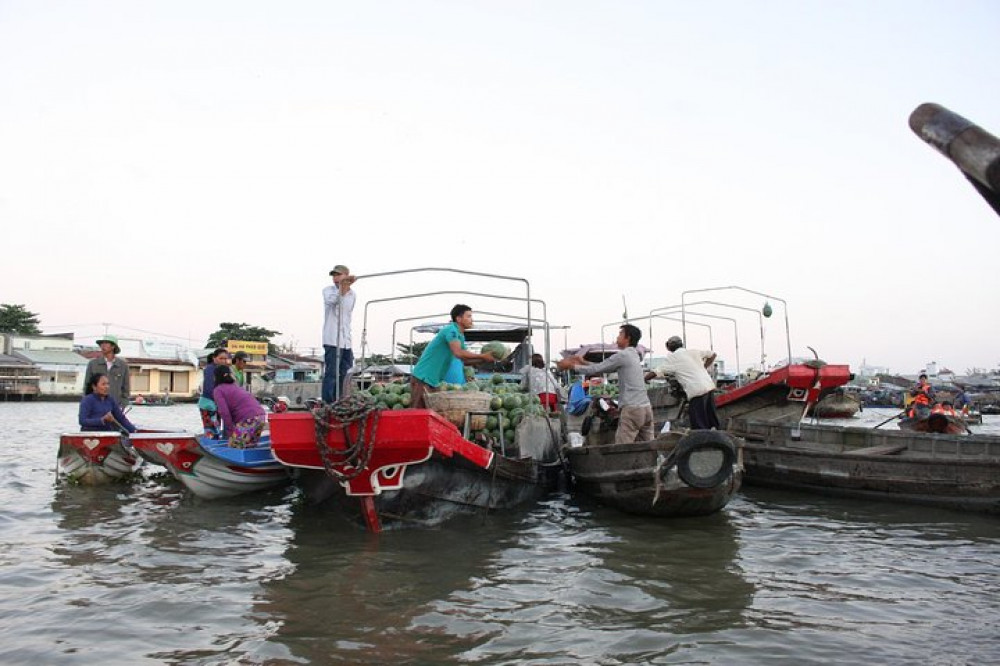
Boat Tours
One of the best ways to experience the Cai Be Floating Market is by taking a boat tour. Visitors can hire local guides who will navigate them through the maze of boats, providing insights into the market’s history and the local way of life. These tours offer a unique perspective on the market, allowing visitors to immerse themselves fully in the vibrant atmosphere.
Culinary Experiences
For foodies and culinary enthusiasts, the Cai Be Floating Market offers a wealth of opportunities to explore the flavors of the Mekong Delta region. Visitors can sample local delicacies, participate in cooking classes, or even embark on a culinary tour, tasting their way through the market’s diverse offerings.
Cultural Immersion
Beyond the market itself, visitors can delve deeper into the cultural heritage of the region by exploring nearby villages and experiencing traditional crafts and activities. This may include visiting pottery workshops, learning about the art of basket weaving, or participating in traditional music and dance performances.
Transportation to Cai Be Floating Market
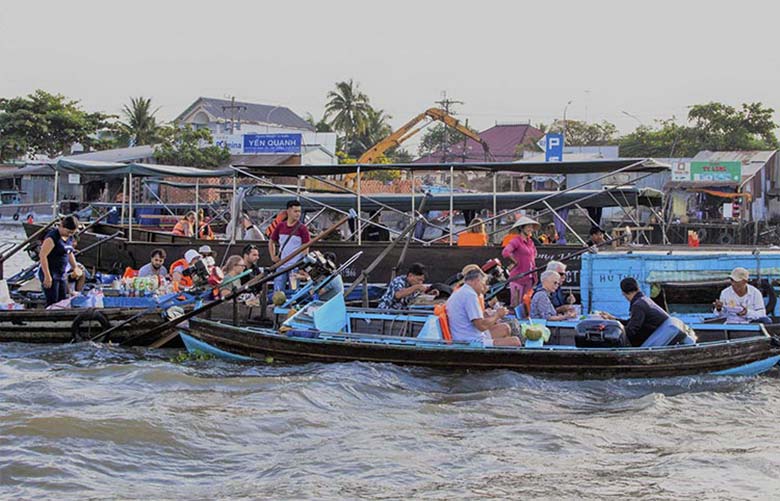
By Boat
The most authentic way to reach the Cai Be Floating Market is by boat. Visitors can hire private boats or join organized tours that depart from nearby cities like Ho Chi Minh City or My Tho. This mode of transportation not only ensures a smooth journey but also allows for a truly immersive experience, as visitors can witness the daily life along the river and appreciate the natural beauty of the Mekong Delta.
By Road
For those preferring to travel by road, Cai Be Floating Market is accessible via the highway connecting Ho Chi Minh City and the Mekong Delta region. Several tour operators offer day trips or multi-day tours that include transportation from major cities, making it a convenient option for travelers.
Combining Modes of Transport
Many visitors choose to combine different modes of transportation for a more comprehensive experience. For example, they may travel by road to a nearby town and then embark on a boat tour to explore the floating market and surrounding waterways.
Best Time to Visit Cai Be Floating Market
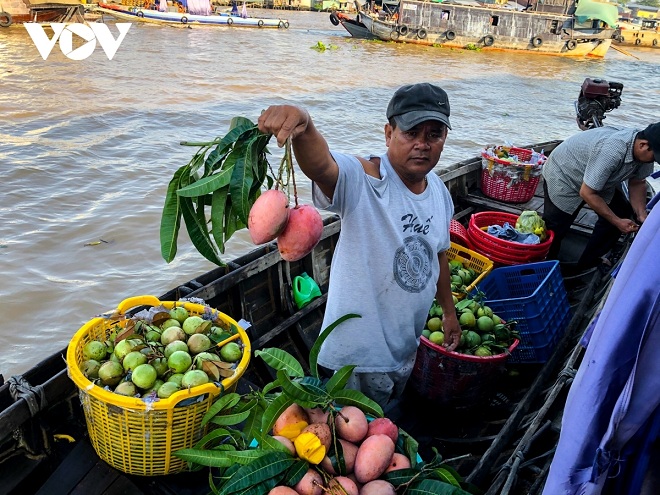
Peak Hours
The Cai Be Floating Market is at its liveliest in the early morning hours, typically between 6 AM and 9 AM. This is when the market is bustling with activity, as vendors arrive with their fresh produce and locals gather to make their daily purchases. Visiting during these peak hours allows visitors to witness the market at its most vibrant and authentic.
Seasonal Considerations
While the market operates year-round, the best time to visit may vary depending on the seasons and weather conditions. The dry season, which runs from November to April, offers more comfortable temperatures and reduced chances of heavy rainfall. However, the rainy season, from May to October, can also be an ideal time to visit, as the lush greenery and swollen waterways add to the scenic beauty of the region.
Cultural Events and Festivals
Certain cultural events and festivals can also influence the best time to visit the Cai Be Floating Market. For example, the Lunar New Year (Tet) celebrations in late January or early February bring a festive atmosphere to the market, with additional cultural activities and performances taking place.
Local Cuisine at Cai Be Floating Market
Fresh Produce and Ingredients
The Cai Be Floating Market is a true paradise for those seeking fresh, locally sourced ingredients. Visitors can find an abundance of tropical fruits, vegetables, herbs, and spices, all harvested from the surrounding farms and gardens. These fresh ingredients form the backbone of the region’s vibrant and flavorful cuisine.
Traditional Dishes
The local cuisine of the Mekong Delta region is heavily influenced by the availability of fresh produce and seafood from the nearby waterways. Some traditional dishes to try at the Cai Be Floating Market include:
- Banh mi: A Vietnamese sandwich made with a crispy baguette, filled with various ingredients such as grilled pork, pate, pickled vegetables, and fresh herbs.
- Hu Tieu: A noodle soup dish that typically includes pork, shrimp, and a variety of herbs and vegetables, served in a flavorful broth.
- Canh Chua: A sour soup made with fish, pineapple, tomatoes, and tamarind, creating a delicious balance of sweet, sour, and savory flavors.
Street Food Delights
In addition to sit-down meals, visitors to the Cai Be Floating Market can indulge in a wide array of street food delights. From freshly grilled seafood skewers to crispy spring rolls and steaming bowls of pho, there is no shortage of culinary treats to satisfy every palate. Exploring the market’s food stalls and sampling different dishes is a must-do for any food lover.
Culinary Workshops
For those interested in learning more about Vietnamese cuisine, many vendors at the Cai Be Floating Market offer culinary workshops and cooking classes. Visitors can roll up their sleeves and get hands-on experience preparing traditional dishes under the guidance of local chefs, gaining insight into the techniques and ingredients that make Vietnamese cuisine so unique.
Traditional Boats at Cai Be Floating Market
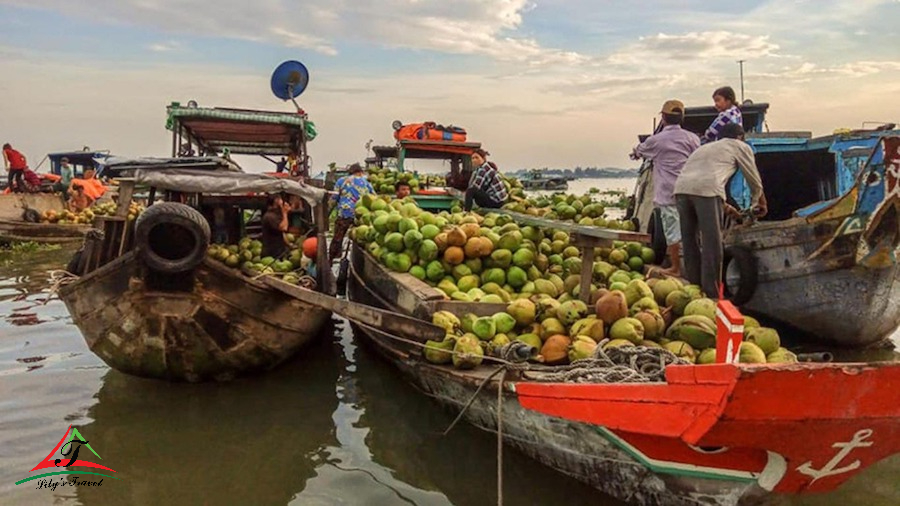
Sampans
Sampans are traditional flat-bottomed wooden boats commonly seen at the Cai Be Floating Market. These small, maneuverable vessels are used by vendors to transport goods to and from the market, as well as by tourists exploring the waterways. Sampans are often brightly painted and adorned with colorful decorations, adding to the festive atmosphere of the market.
Thuyen Thung Boats
Thuyen Thung boats, also known as basket boats, are another iconic sight at the Cai Be Floating Market. These round, woven boats are traditionally crafted from bamboo and waterproof resin, making them lightweight and easy to navigate through the narrow canals. While primarily used for fishing and transportation, Thuyen Thung boats have become a popular choice for tourists looking to experience a leisurely cruise along the river.
Longtail Boats
Longtail boats are a common mode of transportation in the Mekong Delta region, known for their long, slender design and powerful engines. At the Cai Be Floating Market, visitors can hire longtail boats for private tours or transfers to nearby attractions. These boats offer a comfortable and scenic way to explore the waterways, providing a glimpse into the daily life of the local communities along the riverbanks.
Impact of Tourism on Cai Be Floating Market

Economic Opportunities
The influx of tourism to the Cai Be Floating Market has brought about significant economic opportunities for the local community. Many residents have found employment as boat operators, tour guides, or vendors, benefiting from the increased demand for goods and services. The market has become a key source of income for families living in the surrounding villages.
Cultural Preservation
While tourism has undoubtedly brought changes to the Cai Be Floating Market, efforts have been made to preserve its cultural heritage and traditional practices. Local authorities work closely with community leaders to ensure that the market retains its authenticity and charm, implementing measures to protect the environment and promote sustainable tourism practices.
Challenges and Sustainability
As tourism continues to grow, challenges such as waste management, overcrowding, and environmental degradation have emerged at the Cai Be Floating Market. Sustainable tourism initiatives are being developed to address these issues, including waste reduction programs, eco-friendly transportation options, and community-based tourism projects that benefit the local population.
Conclusion
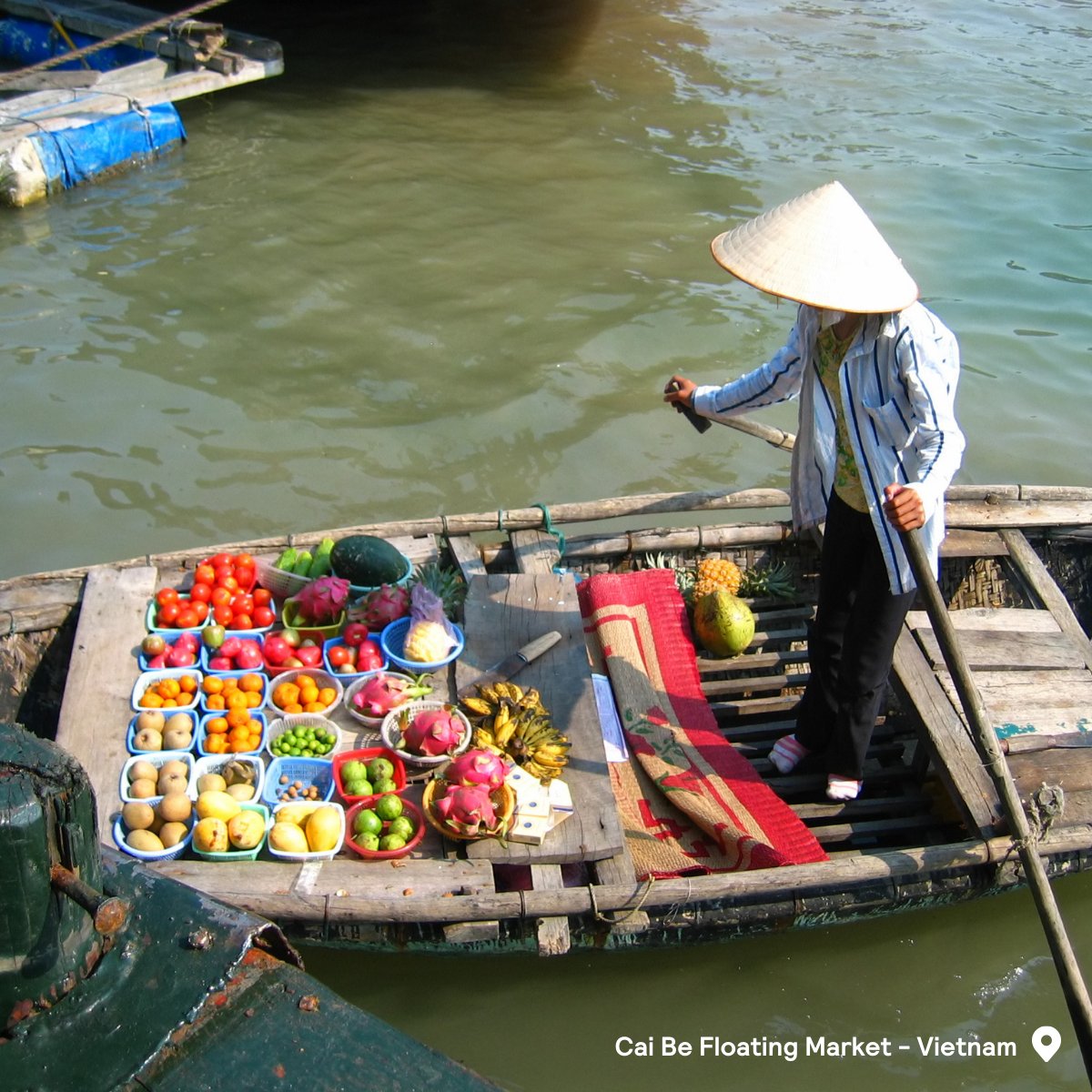
In conclusion, the Cai Be Floating Market stands as a timeless symbol of Vietnam’s rich cultural heritage and vibrant culinary traditions. Nestled in the heart of the Mekong Delta, this bustling marketplace offers visitors a glimpse into the daily lives of local residents, showcasing the beauty of traditional boats, fresh produce, and warm hospitality. By preserving age-old traditions, embracing sustainable practices, and welcoming tourists with open arms, the Cai Be Floating Market continues to thrive as a beacon of community spirit and cultural significance in the ever-changing landscape of modern Vietnam.




